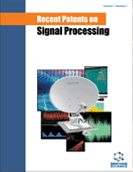Abstract
Fine motor dysfunction in patients with movement disorders, such as Parkinsons disease, is characterized by slowness of movements, decrease of reaction time and involuntary movements. In this article, recent patents on detecting and assessing the said dysfunction are reviewed; their implementation in telemedicine settings, design considerations and ability to assist in dose and time adjustments are discussed. These patents explain application of signal processing techniques in analysis and interpretation of digitized handwriting/drawing information of individuals based on data gathered using touch screens. The study reveals that measures concerning forces, accelerations and radial displacements are the most relevant measurements to detect fine movement anomalies. These findings demonstrate that digitized analysis of handwriting/drawing movements may be useful in clinical trials evaluating fine motor control. This review further depicts the role of employing event-based data acquisition and signal processing techniques suitable for nonstationary signals, such as Wavelet transform, in systems for patient home-monitoring.
Keywords: Drawing, fine motor impairment, fourier transform, handwriting, home monitoring, parkinson's disease, touch screens, wavelet transform, digitizing tablet, resting tremor, Multiple Sclerosis, levodopa drug cycle, signal processing techniques, fine motor movement, wearable sensors, MOVEMENT DISORDERS
 5
5

